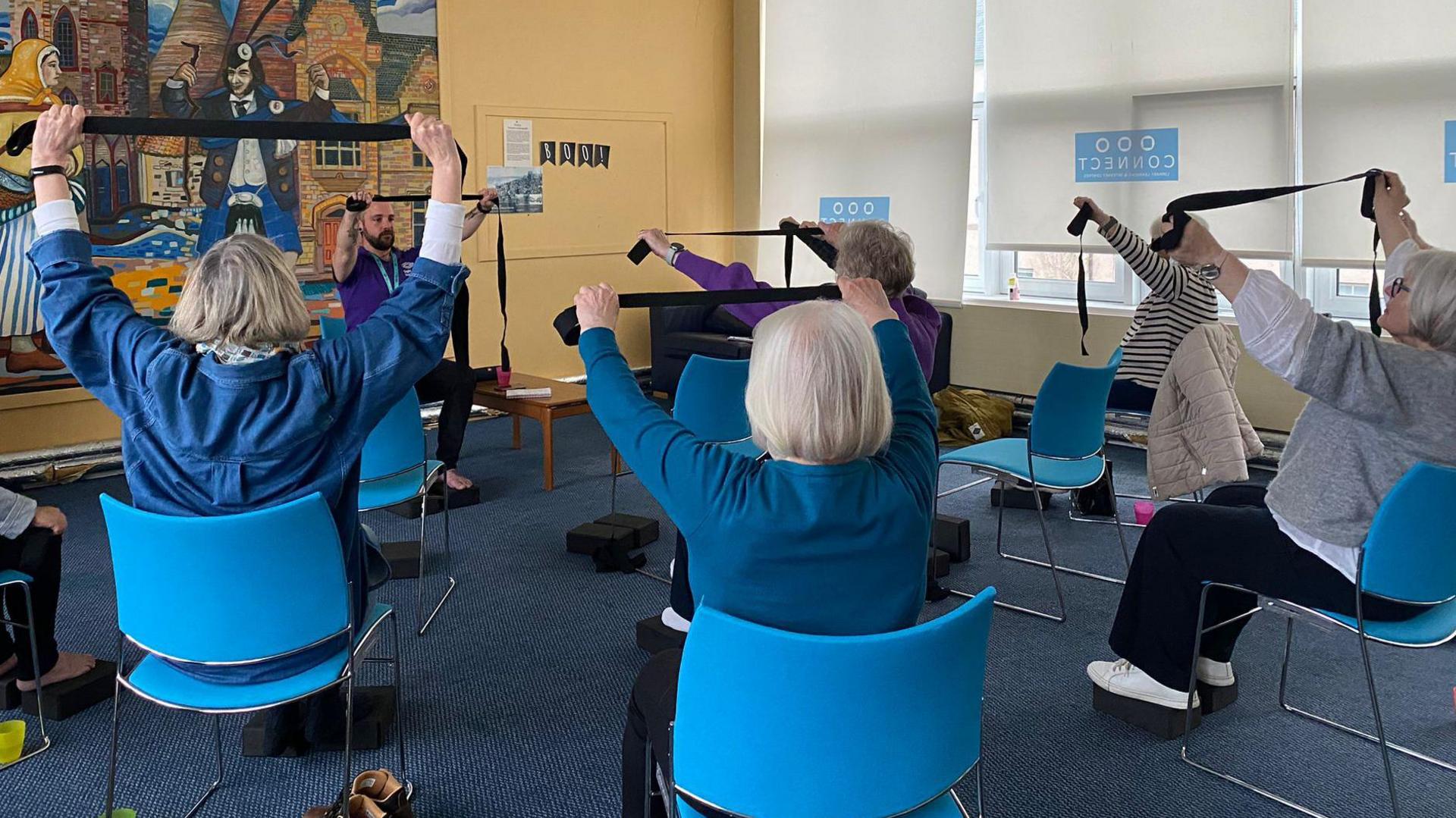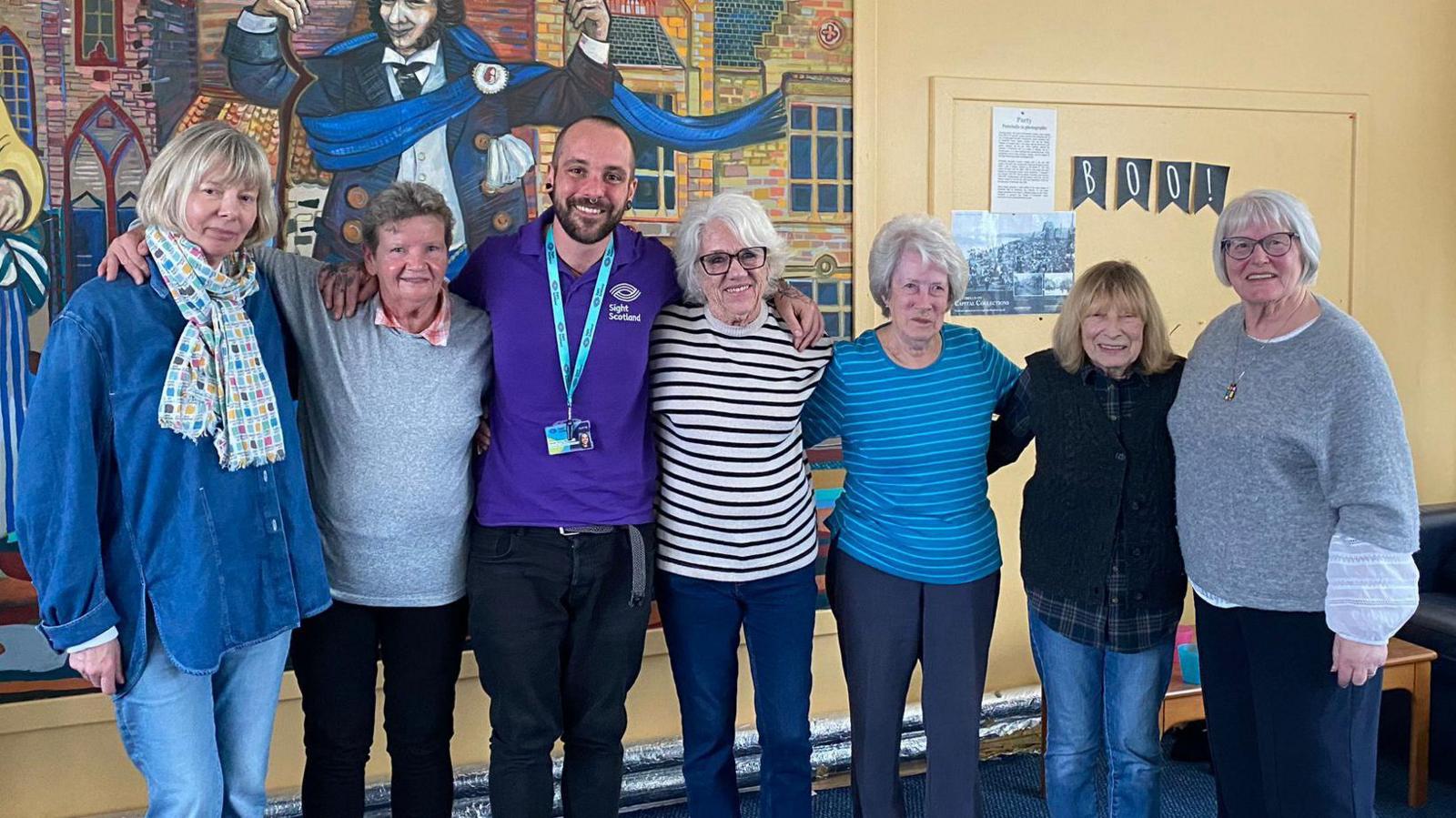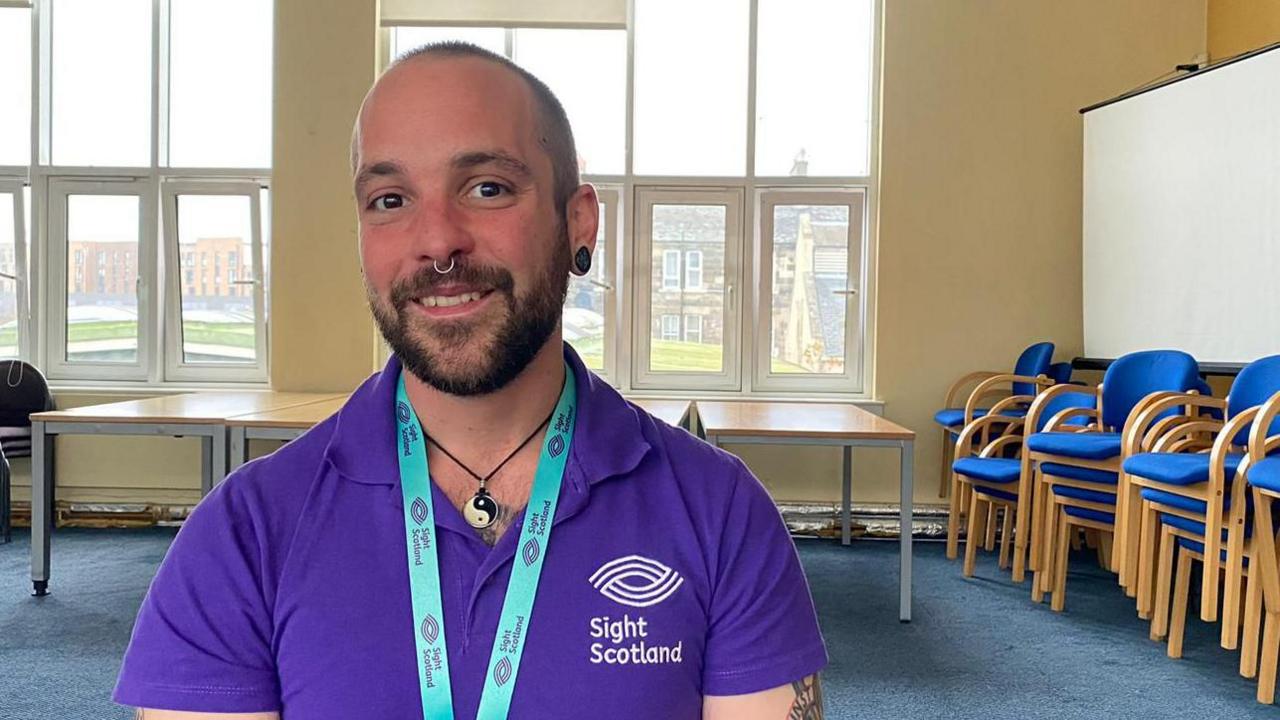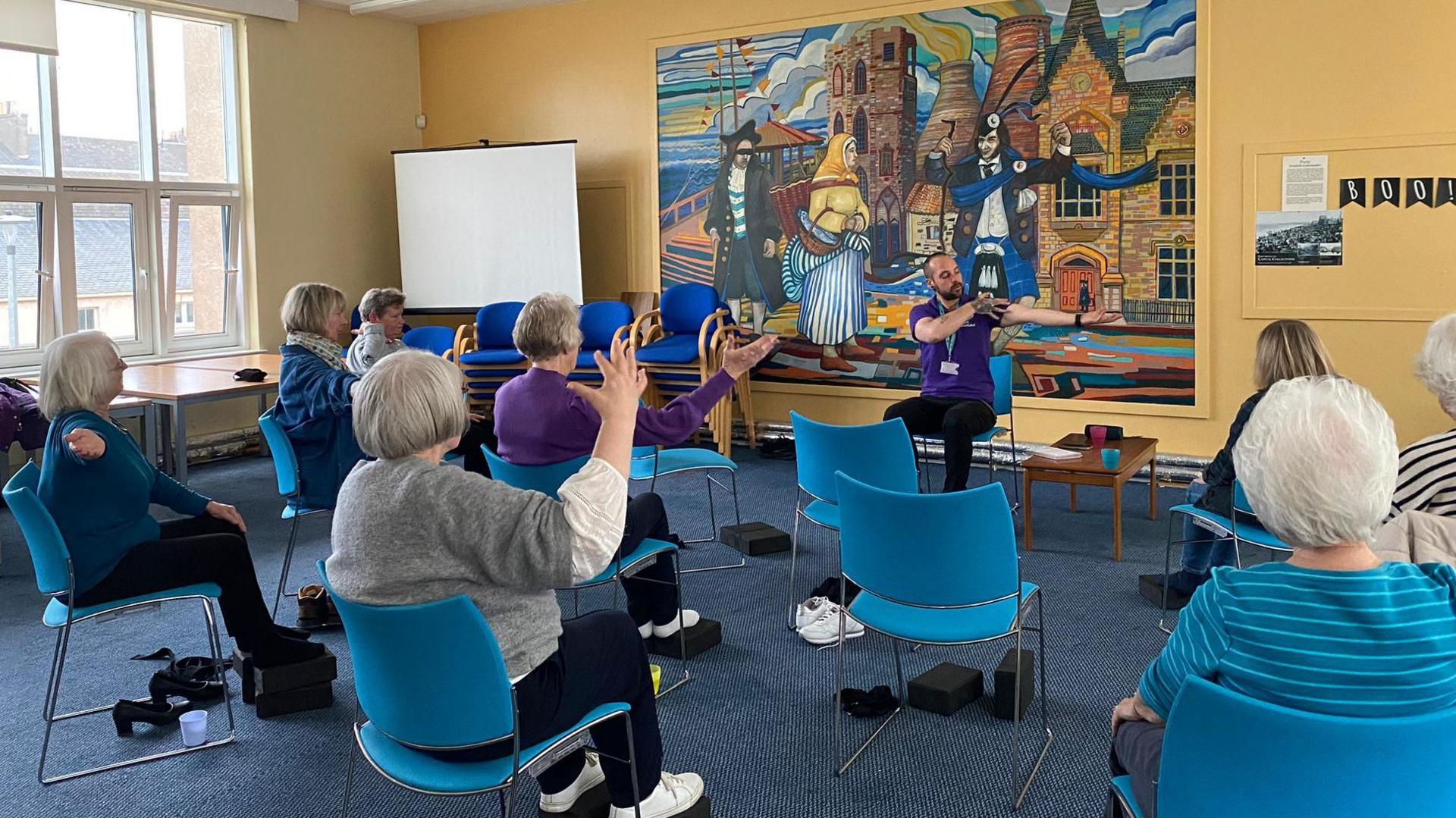How blind yoga is helping people with sight loss

Sight Scotland have launched Scotland's only yoga classes designed for blind and partially sighted people
- Published
When 78-year-old Carolyn Wightman had a stroke two years ago her life changed "drastically".
After losing the sight in one eye, she was suddenly forced to stop driving and seek assistance for household chores, such as cleaning and gardening.
When the vision in her other eye began to deteriorate unexpectedly in February, Carolyn, from East Lothian, turned to Sight Scotland for support.
It recommended its first-ever yoga class designed to promote physical and mental wellbeing among people with visual impairments.
The 60-minute classes, which are all done seated, include meditation, breathing techniques and mindfulness exercises alongside "eye yoga" to help participants relax and reduce stress.

The women say they are all in the same boat and have formed a community
Carolyn, who also suffers from spinal problems, says the classes have improved her flexibility and wellbeing.
"I can't do harsh exercise and I'm very limited with what I can do - I can't do walking groups or things like that," she says.
"The chair yoga is very gentle but very powerful. It's helped my fitness level."
Carolyn says she was interested in yoga before her stroke but struggled to find the time to attend a class.
She says it has helped being surrounded by other woman who have similar day-to-day experiences as her.
"My sight loss has been more sudden so it's taking me longer to adapt," she says.
"But everyone understands each other because we've all got vision loss and sight impairments.
"We don't have to explain anything to anyone, like why we're walking with a stick."

Betty Robertson and Rita Irving say coming to the class has improved their confidence
Betty Robertson and Rita Irving from Edinburgh have been coming to the class since April to meet other people in similar situations to them.
The two women both suffer from dry age-related macular degeneration (AMD), an eye disease that blurs the central vision with no treatment.
Rita said she was told by an optician when she was only 14 years old that she would have trouble with her sight when she was older, while Betty said she was "lucky" to make it to 75 before her diagnosis.
Now, they describe their vision as "poor" and "like looking through mist" with difficulties recognising faces - a common symptom of the disease.
They say the class has helped them "to build confidence" and "relax".
The group's instructor Tamas Danyi-Nagy says he started practicing yoga seven years ago after suffering from serious neck, shoulder and spinal injuries.
"I decided I wanted to know how the body works and how to manage my anxiety and energies around the body," he says.

Tamas Danyi-Nagy started practicing yoga to heal from serious injuries
While completing his yoga instructor training, he started to volunteer for Sight Scotland as a befriender, where he would visit a blind woman and help her with her errands.
Tamas, who is now a community activity worker for the charity, says he was inspired to work with visually impaired people by a friend he had as a teenager who was blind.
"He was very dependant on others and always needed to be guided everywhere," Tamas says.
"Everyone was very gentle with him, but I would always take him to the beach and we would do crazy things together.
"We would go to the cinema and I would audio-describe to him what was happening on the screen."
It was while reflecting on how yoga helped him to heal after his injuries that Tamas realised he wanted to bring this practice to the blind community to promote mindfulness.
"If I had back pain, I would go on to YouTube and search 'yoga for back pain', then watch a video and copy what I'm seeing, while my very good friend wouldn't have that option.
"That's when I decided that this knowledge needs to be accessible for everyone, not just people who see."

The classes run every Friday at Portobello Library
Having taught yoga now for just over a year, Tamas designed the classes specifically to include a range of movements, such as shoulder, arm, neck, back, and leg exercises, as well as eye exercises aimed at reducing tension and improving peripheral vision.
Before starting the blind yoga class he had never heard of the practice that he says strengthens the connection between the eye and the nervous system.
The movements experiment with light and dark and different levels of concentration.
Through his research, Tamas discovered that as a visual impairment becomes more serious, people exercise their eyes less as they start to look at everything up close and on bigger screens.
He says: "When you see perfectly, you're naturally drawn to things around you - people, a tree, a plane in the sky, a bird - so your focus and peripheral vision changes all the time.
"People who are visually impaired sometimes see very narrow parts of an area or not at all, which makes it more difficult to move the muscles in the eye.
"It's so important for people with visual impairments to make a conscious effort to strengthen the eye muscles and make the eyes as healthy as possible."
The charity aims to bring the class to more locations and continue working to help visually impaired people gain back independence and bring a community together.